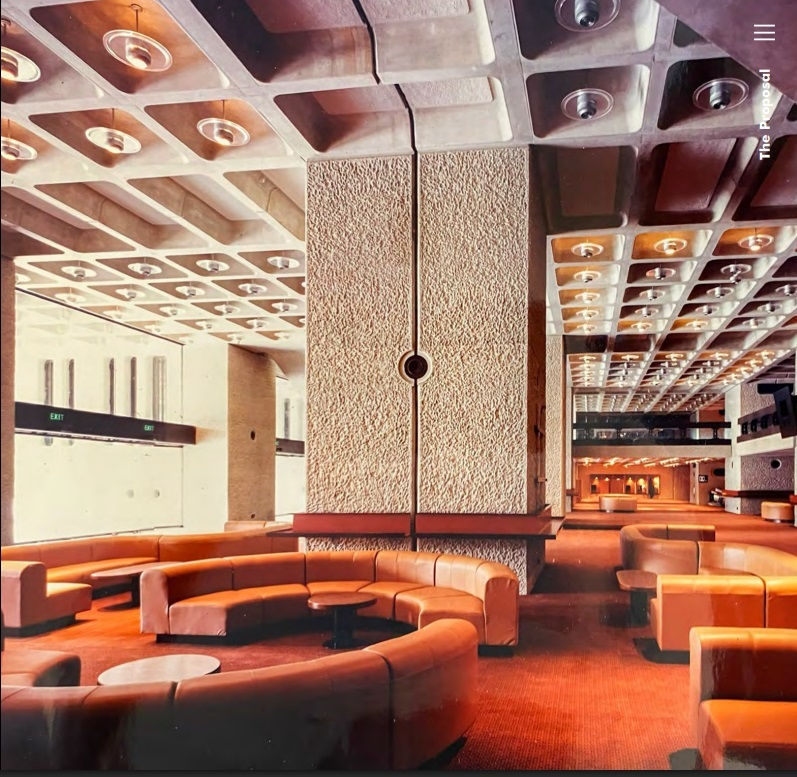A different kettle of fish
- Chris Rogers

- Dec 24, 2023
- 4 min read
For years I’ve believed that St Magnus House, a riverside office building in the City of London from the prolific practice of Richard Seifert, was built as a hotel though never so used. The double-height porte cochere on Lower Thames Street and large first floor terrace overlooking the Thames seemed to support this, whilst post-war government grants to attract foreign money saw the same thing happen elsewhere. But a couple of weeks ago I found out the truth. St Magnus House was the result of an abandoned plan, but for the intended redevelopment of the famous Billingsgate Fish Market – the existing Victorian structure that stands further east would eventually have been demolished. With the hotel idea clearly a, er, red herring, I set out to discover more.

Britain’s capital was founded where the Romans bridged the Thames; their settlement grew up on the northern bank, expanding to include a forum, amphitheatre and temples and surrounded by a wall. The river brought food, wine and building materials from the empire, landing them at quays that were repeatedly rebuilt. The Thames remained the primary supply route for Saxon and mediaeval London which continued this process, often reclaiming land. Goods or ingredients of all kinds arrived here, reflected in the names of nearby streets: milk, bread, honey and fish. In the fourteenth century the king prohibited rival fish markets from operating within a day’s travel of the city but it took another 300 years for Billingsgate itself to be formally established. During the rapid industrialisation of the nineteenth century a purpose-built venue finally arose, replaced a generation later by Horace Jones’s Italianate hall. Its elegant arches and corner pavilions fronted a square market floor for wet sales; a gallery handled dried fish and a cavernous basement, shellfish. The bustle of market life spread into the surrounding streets for decades, maintaining a tradition that the ancient Romans would have recognised.

Their settlement had become the City of London, financial centre of a new empire, yet a place where physical trade remained important for rather longer than many people realise.
Working wharves still dominated the mile and a half of Thames riverside forming the Square Mile’s southern boundary after well after World War 2; the ten-floor concrete monolith of New Fresh Wharf alongside Adelaide House was not even finished until the fifties, whilst the last entirely new warehouse opened as late as 1972 for the fur trade. This level of activity was being mirrored downstream, and so the rebuilding and expansion of Billingsgate must have appeared an obvious move at the time.

New Fresh Wharf closed in May 1970 and was demolished in 1973; planning permission for Seifert’s new complex was granted the same year. Lorries would enter along the quayside and drive across the ground floor of the building to load and unload goods, with workers’ cars and other vehicles accommodated in the basement via lifts. A market hall, much larger than Jones’s, sat at first floor level, top lit and connected to the City Corporation’s elevated pedestrian walkway system that bridged over Lower Thames Street; a riverside terrace would continue the network to the south and hide the truck traffic. Finally, office space on the upper floors – finished in alternating bands of pre-cast concrete and glass in typical Modernist style – would overlook a private courtyard on top of the market hall roof.

A phased approach was planned, with the western-most wing built first. This was probably for practical reasons since the Jones building and its adjacent lorry park (on the site of Blitz losses) would have needed time to decommission. Construction of what became St Magnus House, named after the nearby church, began in 1978, its smart new look shown off by AF Gill’s seductive perspective, and was completed just two years later. Times, however, were changing.
As with Covent Garden in the West End, the restricted location was problematic whilst the newly-formed conservation movement was agitating strongly for the preservation of historic architecture instead of its demolition. Horace Jones’s market building was duly listed in 1981, radically curtailing the planned redevelopment, and by the time archaeological investigation beneath the lorry park had concluded two years later the writing was on the wall for the rest of the scheme. Billingsgate market moved to Poplar, occupying a converted and extended warehouse, whilst Jones’s elegant hall was adapted by Richard Rogers to become a dealing floor and offices for Citibank – though, with some irony, this project too never came to fruition following a change in direction by the client. Left empty for many years, it is now operated as an events space known as Old Billingsgate.

St Magnus House became a stand-alone commercial office block that was leased by Midland Bank for its international division. The bank installed a two-storey vault at ground floor level but otherwise left the building unchanged. Today, it will soon be subject to a make-over designed to open up its rather defensive aesthetic and encourage more people to discover those remarkable terrace views. At least I now know the true story…



Comments